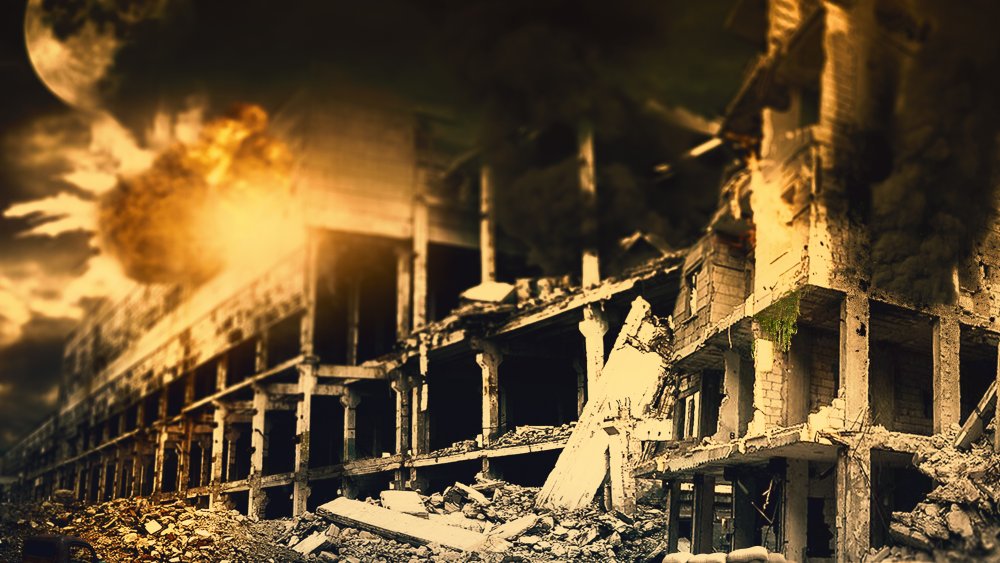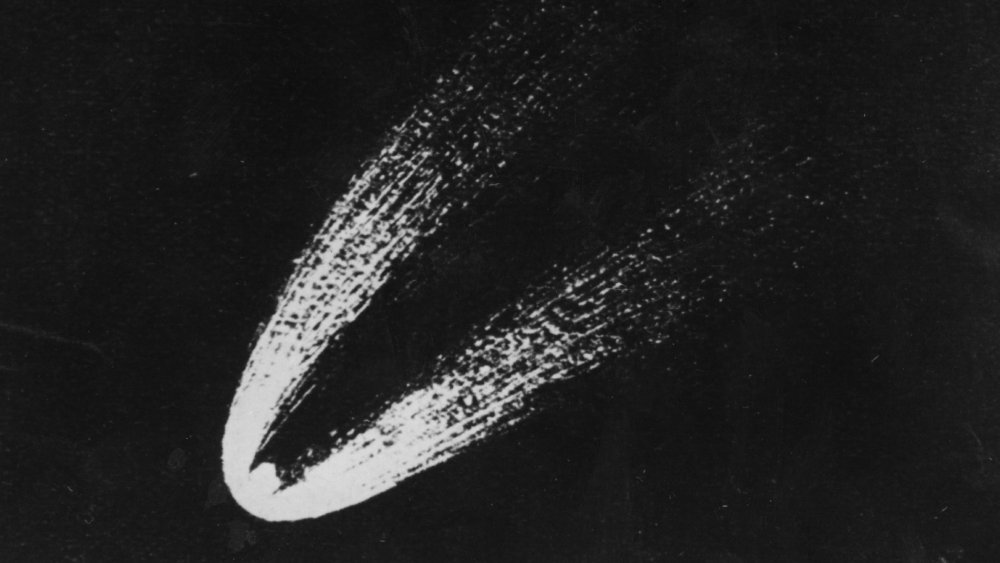This Is Why People Thought The World Was Coming To An End In 1910
Humankind has had more than its fair share of false doomsdays. From perennial favorites like the rapture, predicted with unwavering enthusiasm two or three times a year, to new and exciting translations of the works of Nostradamus, people just can't get enough of those wonderful prognosticated existential threats.
And if you were alive in 1910, there seemed to be a decent argument for putting on your best freak-out attire and panicking like there was literally no tomorrow. There were plenty of portents of humanity's doom — it was "a year of massive fires, severe droughts in usually wet areas," and "torrential rains in usually dry areas," according to History Collective. International tensions were on the rise. Everyone in Queen Victoria's family photos seemed hellbent on eliminating the others in an anemia-prone game of geopolitical Highlander. But more than that, scientists had finally started to nail down the art of spectroscopic analysis, and according to Wired, had just announced that the Earth was about to be gassed into oblivion by a poisonous comet.
Comet me, bro
Halley's Comet, much like David Bowie's physical form, buzzes by the Earth roughly once every 75 years. It had last dropped by in 1835, when much of human science was still focused on whether or not you could replace a person's blood with milk. By the time that it came around for another pass in 1910, new and exciting research fields had come to light. Among them: analyzing the elemental makeup of heavenly bodies based on the light they gave off. Scientists taking a gander at Halley's Comet discovered a couple of remarkable things. First off, the Earth would be abnormally close to its path in 1910, passing through the comet's tail. And secondly, the comet was trailing an awful lot of cyanogen, an immensely toxic chemical.
According to Smithsonian Magazine, that's where French science fiction author Camille Flammarion came in. Flammarion theorized — loudly — that Halley's Comet was set to poison the world.
Scientists stepped in and pointed out that any toxic space gas would be spread pretty thin, and that nobody was in danger. The public, true to form, got to work buying and selling "anti-comet pills," gas masks, and specially-made umbrellas to protect them from the onslaught of space chemicals. One guy had himself lowered into a well with a gallon of whiskey, though it's possible that he just needed some time away from his kids. Folks threw comet parties. Unlike what Halley's Comet didn't drop into Earth's atmosphere, the whole thing was a real gas.

